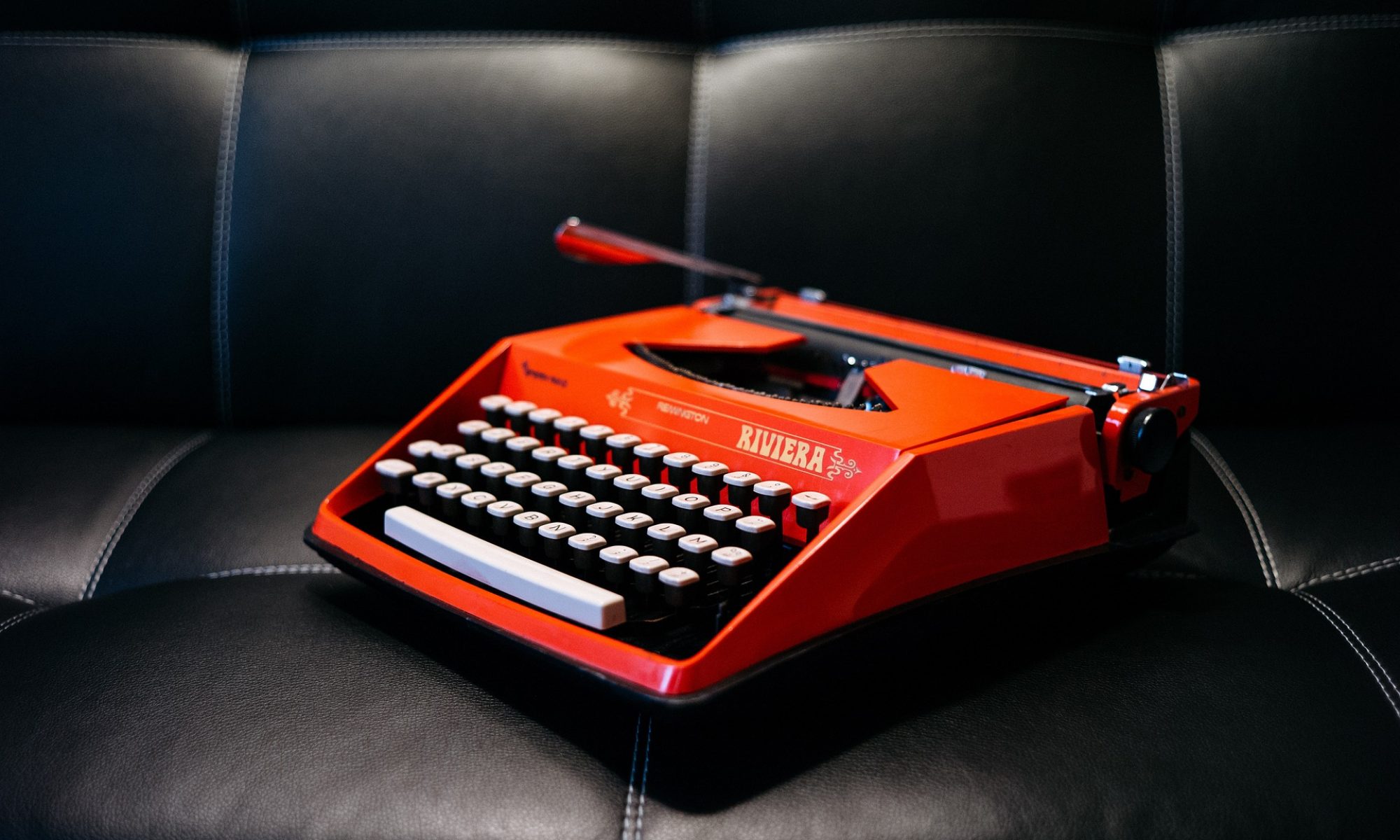Many artists in Ontario are unaware of the information and services available to them. The Ontario government recently created a Web site to provide them with information about a range of programs and services specific to their needs.
The new website – www.ontarioartist.ca
The site includes links to important information for artists such as:
* sources of funding
* professional development opportunities
* legal assistance
* how to market their work, etc.
Painted Skateboard Decks
What: 15 painted skate decks.
Where: Sweet Gallery and Sugar Shoppe @ Distillery
Case Goods Warehouse , studio 107
When: June 21~ 28
www.harveychandoodles.blogspot.com

MSN Art Quiz
I missed number 9. I think the images are too small to see clearly.
Art Quiz II – MSN Encarta
Images from the Art & Artifacts show
It was a hot and hazy day, and there was little street traffic to draw people to the show. We got a lot of interest from those who passed by, but the show didn’t do as well as we were expecting.
It did give us a chance to meet other artists in the Duke St. Art Collective, of which I like to consider myself a member, since ZuckerLoft Studio is only about 4 blocks away. Sure we still need drywall (soon, very soon), but we like to think we gave it a real try.
I believe the lack of success was due in part to the location, the lack of advertising, and the hot, hazy day. We were initially worried about thunderstorms, but the sun and heat really kept the crowds indoors. Still, we learned a few things about presentation, and how to do this better next time.
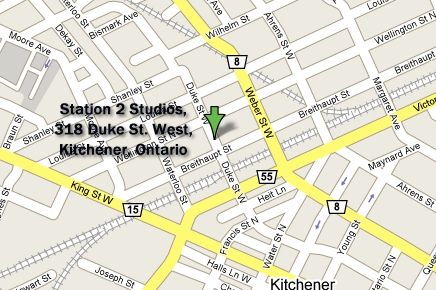
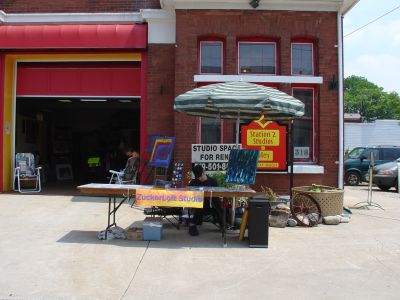
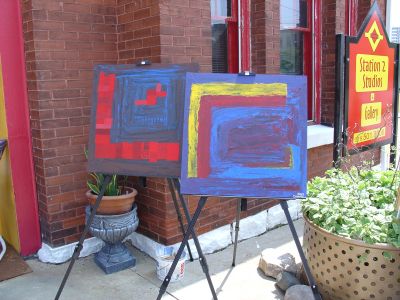
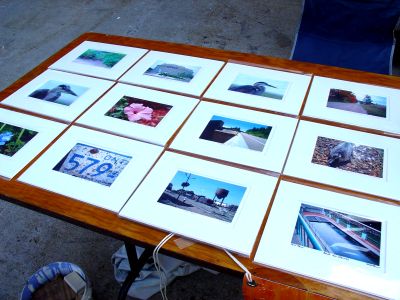
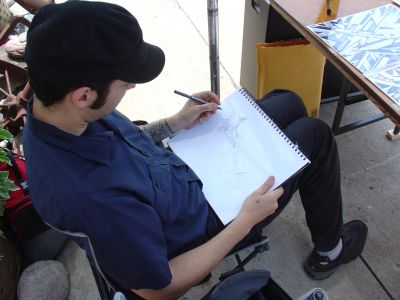
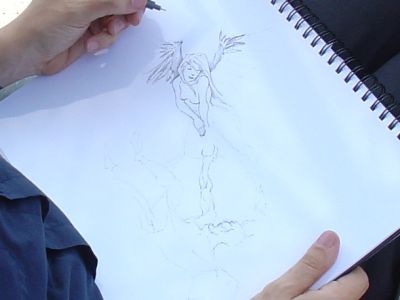
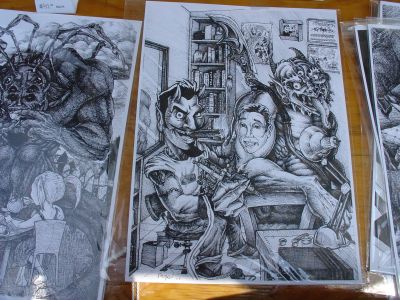
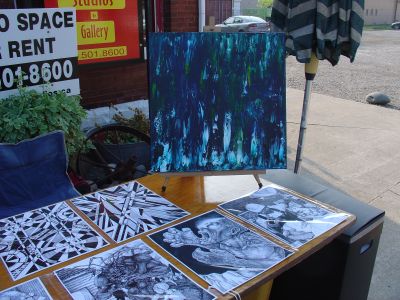
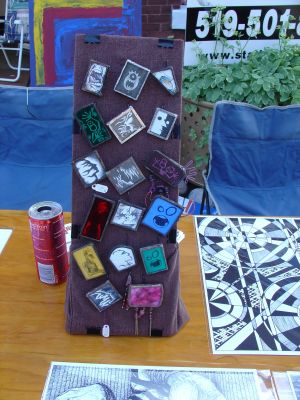
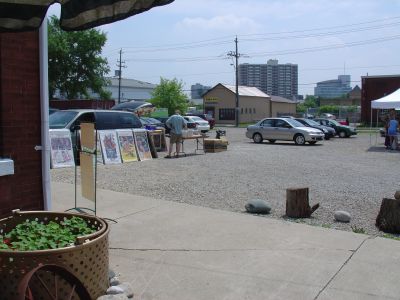
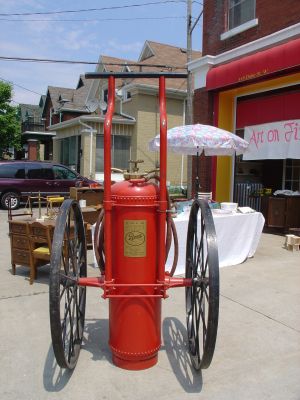
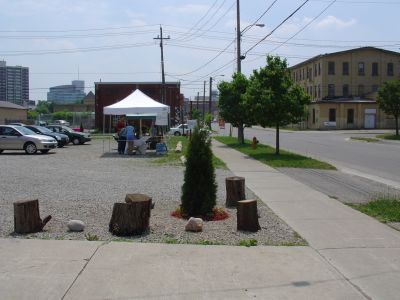
Art & Artifacts show at Station 2 Studios
This Saturday (June 2nd), I’ll be participating in a show at Station 2 Studios, called “Art and Artifacts”. I’ve got a table just outside the front doors, and will be selling fine photo prints, some of my acrylic paintings, and any found object artifacts I can dig up.
Station 2 was an active fire station until 1964. In the past, it’s been used as car dealerships and car repair businesses. It sold in 2004 to Antoinette Rodighiero who started converting it to a live/work space. They now rent out space to artists and also operate as a small gallery. I’m only a few blocks away, and I have my own studio, otherwise, I’d seriously consider signing up with them.
Fine Printing – Making fine prints
This is what I’m doing for this Saturday’s art sale.
Fine Printing – Making fine prints
(Part 2: Editioning and Mounting your prints)
Editioning your prints
One of the important characteristics of photography is that it allows almost infinite reproduction from a negative. However some photographers find that selling their work as a limited edition is an effective marketing ploy. Usually those buying early in the edition are charged a basic price, which is then increased as the edition sells. I’d suggest only limiting editions after discussing this with your gallery – and if you don’t have a gallery representing you, not to bother with limited editions.
If you intend to market a print as a ‘limited edition’ of, for example, 50 prints, you should print the edition at this point, or at the very least printing the first tranche, perhaps 20%, of your edition and put the paper required for the rest into cold storage. The prints in an edition should be identical (or as near so as is possible) and photographic paper is subject to frequent and often unannounced ‘improvements’ by the manufacturer that mean the next batch you buy may not produce identical prints.
How To Mount a Print (About.com)
This is actually a pretty useful lesson for those looking to make a hinge-mounted mat.
Mount a Print
Photographic prints should be mounted so they can be removed from the mount easily, and do not touch the glass if they are framed. This is done by using a window overmat. Cutting mounts requires special equipment and some practice, and although many photographers do mount their own prints, others are happy to leave the job to a professional framer. The advice here is still useful, as not all framers are trained to handle photographs.
Underground Artists Take on the Sith in The Vader Project
Pop surrealist, graffiti, tattoo, lowbrow, comic and underground artists Shag, Paul Frank, Tim Biskup, Frank Kozik, Marc Ecko, Amanda Visell, Tim Biskup, J. Otto Seibold, Gary Baseman, Joe Ledbetter, Urban Medium and Jeff Soto, among others, show their allegiance to the dark side by customizing Darth Vader helmets in landmark gallery exhibition called The Vader Project, to debut at Star Wars Celebration IV on May 24 to 28 at the Los Angeles Convention Center.
The Vader Project is presented by Master Replicas, and curated by Dov Kelemer of DKE Toys, one of the largest designer vinyl and art-toy distributors in the world, exclusively representing over 50 companies, artists, and designers. Kelemer gathered the hottest underground and pop surrealist painters, artists and designers and gave each artist a Master Replicas 1:1 scale prop replica of the Darth Vader helmet used in the Star Wars films. Each helmet served as a blank canvas for each artist to paint, design, mash up and customize in their own unique style.
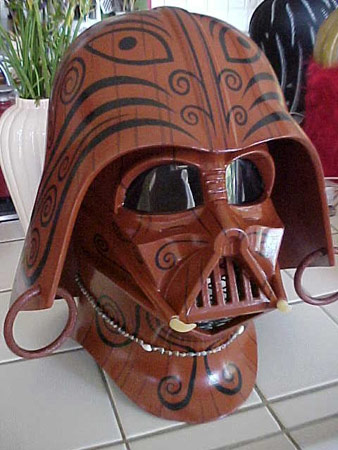
Star Wars: Community | Underground Artists Take on the Sith in The Vader Project
CARFAC doesn’t represent collage artists
CARFAC has won such battles as the right to exhibition fees from public art galleries, the recognition of artists as the primary producers of culture and the institutionalization of “moral rights” to protect artists from exploitation. With independent regional affiliates in several provinces and territories, they have spent decades working to organize, and bargain on behalf of, the country’s professional visual and media artists–including those artists which the CARFAC petition represents.
CARFAC’s response, entitled “Copyright Law and the Visual Artist,” starts by asking, “What do artists want from copyright reform?” They assert that current Canadian law does not protect “appropriation without permission” under any circumstances, and that this is in artists’ best interests. They continue to encourage new restrictions on use, including paying artists for resale of their work and bringing Canada “in line with the World Intellectual Property Organization agreements.” In response to collage artists’ concerns about legal reforms eradicating their practice, they advise artists “to seek permissions, to pay the contributors and to credit them.”
Jonathan Culp: Cutting Out Collage
Looking for Studio Business Software
I’ve recently been looking into some software that will allow me to keep a database of my art — to allow me to track the works while they’re out on exhibition, on loan, or after I sell them. Once you actually start looking, you can find a few good candidates, some of which even have point-of-sale features. One of the apps I’m looking at is called “Art Affair”. Despite the unfortunate name, unfortunate splash screen, and unfortunate colour scheme, it’s a very handy database, and allows you to list your art, complete with images, and cost/resource tracking for each work. It also allows you to keep a contact database, and you can print up invoices for sales to individuals in said contact database. The interface is a little dated, and the underlying database structure is flat text files, but it does have some good robustness, and it backs up your data every session. It also allows you to export your data, should you decide to go with some more enterprise-level stuff.
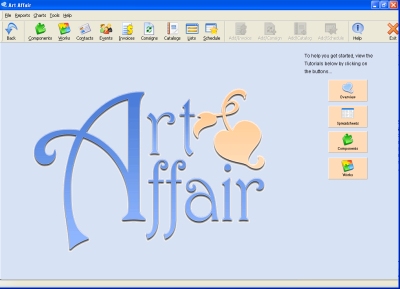
I realize I could simply write my own database software, or somehow adapt Movable Type into an art database, but for $139 US, it’s a pretty good deal.
You can find more about these guys at http://www.artaffairsoftware.com
